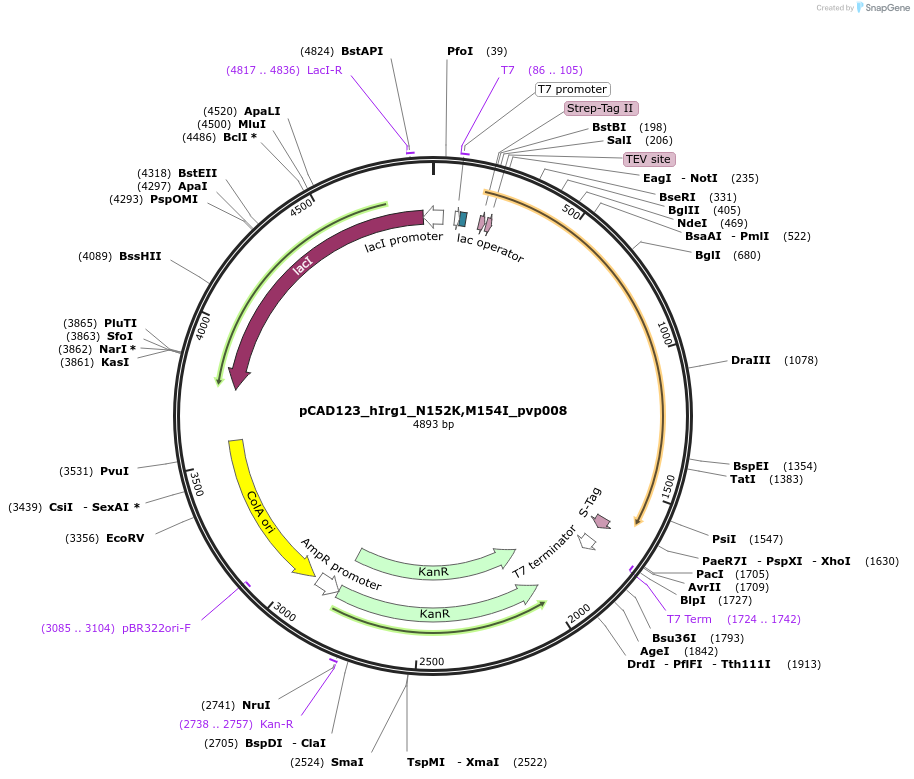pCAD123_hIrg1_N152K,M154I_pvp008
(Plasmid
#239118)
-
PurposehACOD1 with N152K and M154I mutations in E.coli expression vector
-
Depositing Lab
-
Sequence Information
Ordering
| Item | Catalog # | Description | Quantity | Price (USD) | |
|---|---|---|---|---|---|
| Plasmid | 239118 | Standard format: Plasmid sent in bacteria as agar stab | 1 | $89 | |
Backbone
-
Vector backbonepCOLADuet-1
-
Backbone manufacturerNovagen
- Backbone size w/o insert (bp) 3519
- Total vector size (bp) 4893
-
Modifications to backboneN-terminal StrepTag and TEV site
-
Vector typeBacterial Expression
Growth in Bacteria
-
Bacterial Resistance(s)Kanamycin, 50 μg/mL
-
Growth Temperature37°C
-
Growth Strain(s)DH5alpha
-
Copy numberLow Copy
Gene/Insert
-
Gene/Insert namecis-aconitate decarboxylase
-
SpeciesH. sapiens (human)
-
Insert Size (bp)1374
-
MutationDeleted amino acids 1-3 and 462-end. Mutated N152K and M154I
-
GenBank IDNM_001258406
-
Entrez GeneACOD1 (a.k.a. CAD, IRG1)
-
Tag
/ Fusion Protein
- StrepTag and TEV site (N terminal on backbone)
Resource Information
-
Supplemental Documents
Terms and Licenses
-
Academic/Nonprofit Terms
-
Industry Terms
- Not Available to Industry
Trademarks:
- Zeocin® is an InvivoGen trademark.
Depositor Comments
Method for purification of the human enzyme cis-aconitate decarboxylase (ACOD1) from this plasmid in recombinant E. coli cells: http://dx.doi.org/10.13140/RG.2.2.12579.58405
These plasmids were created by your colleagues. Please acknowledge the Principal Investigator, cite the article in which the plasmids were described, and include Addgene in the Materials and Methods of your future publications.
-
For your Materials & Methods section:
pCAD123_hIrg1_N152K,M154I_pvp008 was a gift from Konrad Buessow (Addgene plasmid # 239118 ; http://n2t.net/addgene:239118 ; RRID:Addgene_239118) -
For your References section:
Amino acid positions near the active site determine the reduced activity of human ACOD1 compared to murine ACOD1. Chen F, Yalcin I, Zhao M, Chen C, Blankenfeldt W, Pessler F, Bussow K. Sci Rep. 2023 Jun 26;13(1):10360. doi: 10.1038/s41598-023-37373-w. 10.1038/s41598-023-37373-w PubMed 37365251



